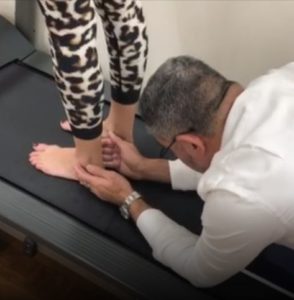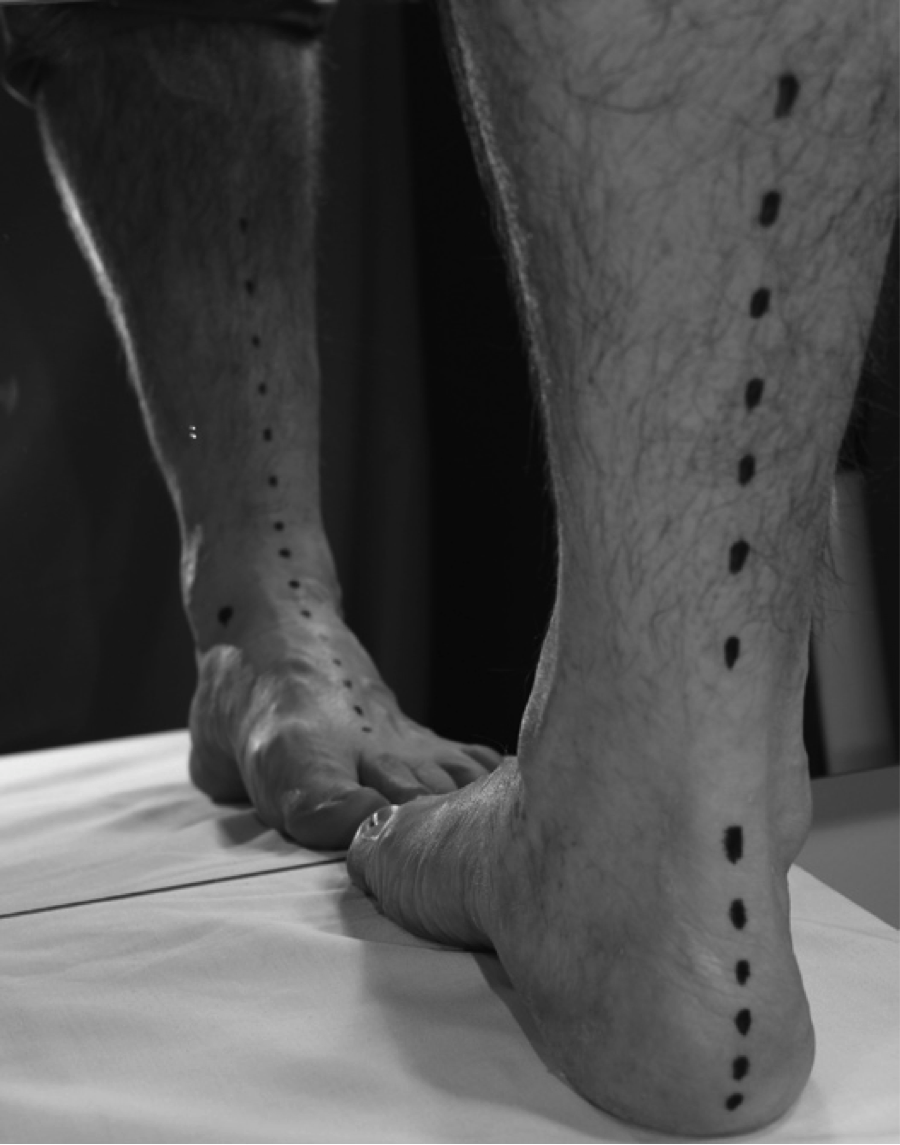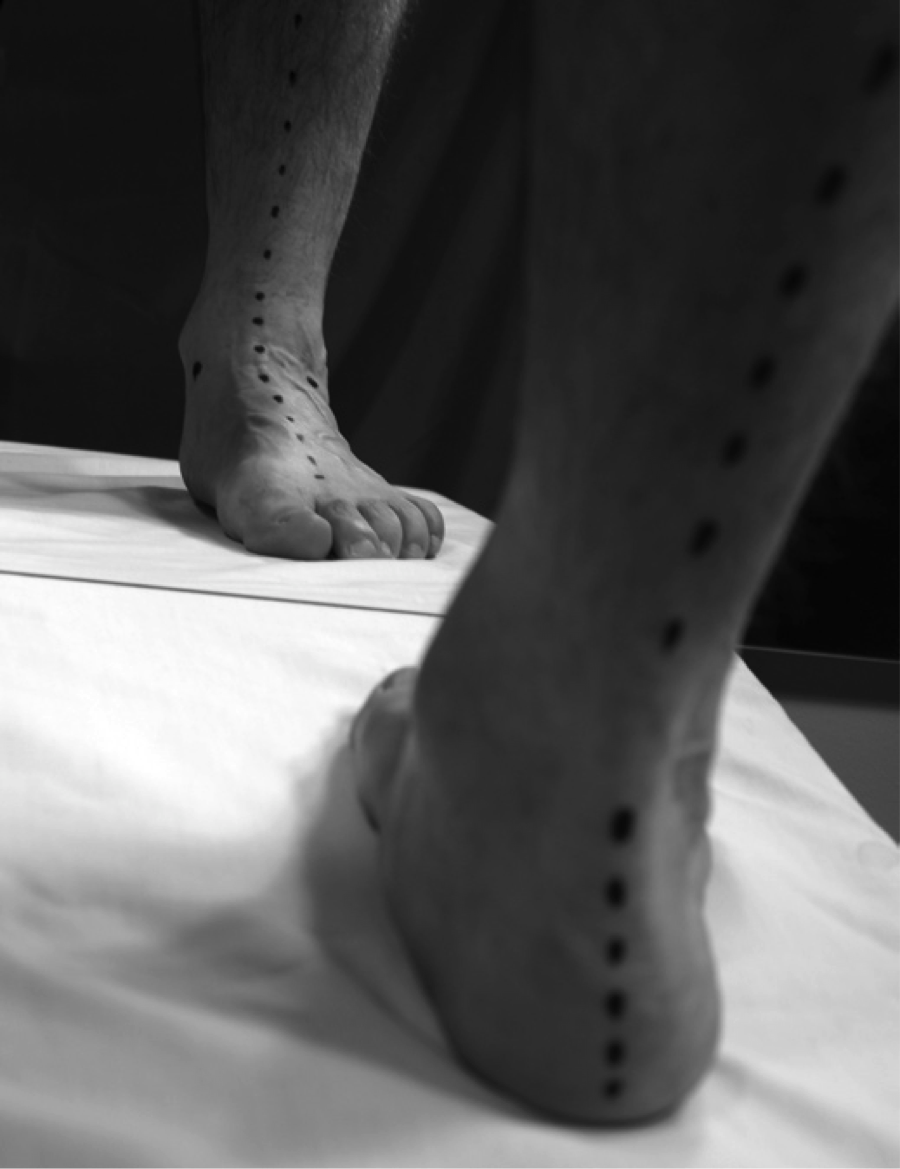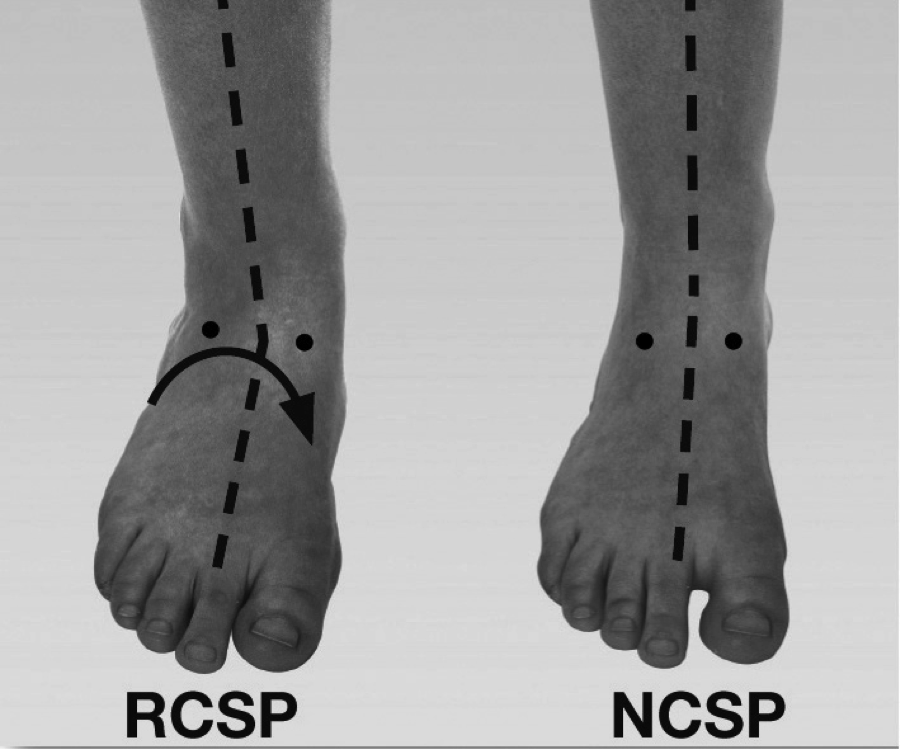Finding Neutral Calcaneal Stance Position (NCSP)
- Edgard Diaz
- May 11, 2018

In my clinical experience, when heat moulding an orthotic device directly to the patient’s foot, or when taking a weight bearing foam box cast, the Najjarine Biomechanical Assessment (NBA) Anterior Line Method is the best technique to use in finding the patient’s Neutral Calcaneal Stance Position (NCSP). In my opinion, using this method results in a more successful outcome when prescribing and fitting orthotics.
I have found that it’s advantageous for the patient to be cast in a position that allows the bisection of the calcaneus and the lower 1/3 of the tibia to be in alignment. This position is commonly referred to as the Neutral Calcaneal Stance Position (NCSP). This simple method that I developed and use uniquely at Dr. Abbie Clinics, is based on aligning the anterior aspect of the tibia resulting in alignment of the posterior aspect of the tibia.
When heat moulding an orthotic, this method is particularly useful as the patient will be wearing shoes and so ‘neutral’ can only be observed from the anterior position. From my anecdotal research, and clinical application, this method produces the required result – NCSP. So it appears that anterior alignment and posterior are apparently linked.
Looking at figure 1, where the foot is place into NCSP with the anterior line markings which reflect (in the mirror), observe the rearfoot position. Note that the anterior line is aligned with the 2nd metatarsal head.
In Figure 2 the patient (same foot and markings as Figure 1) was allowed to stand normally (i.e. their Resting Calcaneal Stance Position (RCSP)) and the rearfoot and anterior view compared. Note that the anterior line leans towards the the first metatarsal head.
I am aware that there is much conjecture about prescribing orthotics to the patients’ NCSP and as to whether this benefits the patient. However, both myself and the Podiatrists in my clinics have used this system to prescribe over 110,000 pairs of orthotics – and the results and feedback we receive really do speak for themselves. Of course the orthotic device cannot rigidly maintain the patient in their NCSP in gait as we require the patient’s biomechanics to allow for some compensatory pronation within the gait cycle (about 5°).
In the past I used the Talar Navicular method to find NCSP and have on occasion found that some patients present with an osseous lump – usually on the lateral side – which does not allow me to achieve congrency of the joint using this method.
The reason for this so called ‘Psuedo Talar Head’ is unclear. It may be an acquired extra bone growth due to injury or it may be genetic – either way when I try to find congruency, the patients foot appears to be everted/pronated. Therefore, I developed the NBA Anterior Line Method as a quick and effective way to achieve congruency (neutral). This method can also be used to demonstrate to and educate the patient when they stand in the weight bearing position.
Topical reference points are important because we cannot put our fingers inside the actual subtalar joint itself.
Therefore, we need to use topical reference points to be able to achieve congruency.
The NBA Anterior Lines Method is also useful to achieve the same result in the supine position when checking forefoot deformities: forefoot valgus, forefoot varus and supinatus, dorsiflexed and plantarflexed first. The supine position allows for minimal movement of the patient on the bench and allows for a more time-effective assessment process.
The interesting point is that when this method is used in weight bearing the rearfoot is also aligned, thus being very helpful when finding neutral when the patient is wearing shoes and socks.
The NBA Anterior Lines Method procedure involves following steps:
- Start by finding the reference points as if you were using the Talo Navicular method for finding Subtalar Joint Neutral (STJN). Ask the patient to pronate their foot (roll inwards) and place your finger into the depression that sits lateral to the talar head and anterior to the lateral malleolar.
- Then ask the patient to supinate their foot (roll outwards) and mark that spot (ie opposite to the lateral side) – see figure 3.
- Place thumb and forefinger either side of the talar head (on the two marked spots).
- Palpate the bump on either side until you feel that they are even or congruent – at this point the Sub Talar joint is in the neutral position.
- Next, bisect the two dots as for Talonavicular method.
- Then mark out the 2nd metatarsal head position and join the bisection and the 2nd metatarsal head.
- Draw a dotted line down the tibial crest by finding the trough on the lateral side.
- Find the 2nd metatarsal head and line it up with the line along the tibial crest, whilst palpating the sub talar joint.
This method is extremely useful when looking to identify the STJN position in the supine position and when taking a plaster cast or foam box impression of the patient’s foot in STJN position.
The three key topical landmarks will now line up i.e. 2nd met head, bisection of the Talonavicular landmarks and the point on the Tibial crest along the lower 1/3 of the Tibia.
Note on the RCSP the marked line will be in line with the 1st metatarsal head instead of the correct alignment, which is the 2nd Metatarsal head. When dealing with an everted foot the line along the tibia will always align towards the 1st MTPJ.
If the practitioner is having difficulty identifying the exact reference points ask the patient to roll their foot to the full inverted range of motion and flex the hallux and note the tibialis anterior tendon and mark the depression next to the medial aspect. Then ask the patient to evert or pronate their foot and identify the depression on the lateral aspect.
When Redmond (1998) wrote ‘Subtalar joint will therefore be in neutral when the concavity above the malleolus is congruent to the concavity below the malleolus,’ there was no mention of the clinical difficulties of oedema/swelling around the ankle or possible osseous deformities. The NBA Anterior Line Method however takes into account such issues and actually simplifies the process of finding Subtalar Joint Neutral.
Definition: Neutral (NCSP) a position where the STJN is neither pronated or supinated
Terms:
STJN – Subtalar Joint Neutral
1st MTPJ – 1st Metatarsal Phalangeal Joint
RCSP – resting Calcaneal Stance Position
NCSP -Neutral Calcaneal Stance Position
References
Najjarine, A ., The Orthotic Revolution, October 2008
Michaud T.C., 1993 Foot Orthoses and Other Forms of Conservative Foot Care. Williams and Wilkins, Baltimore, pp.93-105.
Root M L, Orien W P, Weed J H., 1977 Normal and Abnormal Function of the Foot. Clinical Biomechanics Vol 2, Los Angeles Valmassy, R.L.. Pathomechanics of Lower Extremity Function.
Clinical Biomechanics of the Lower Extremity. Mosby, St Louis.





